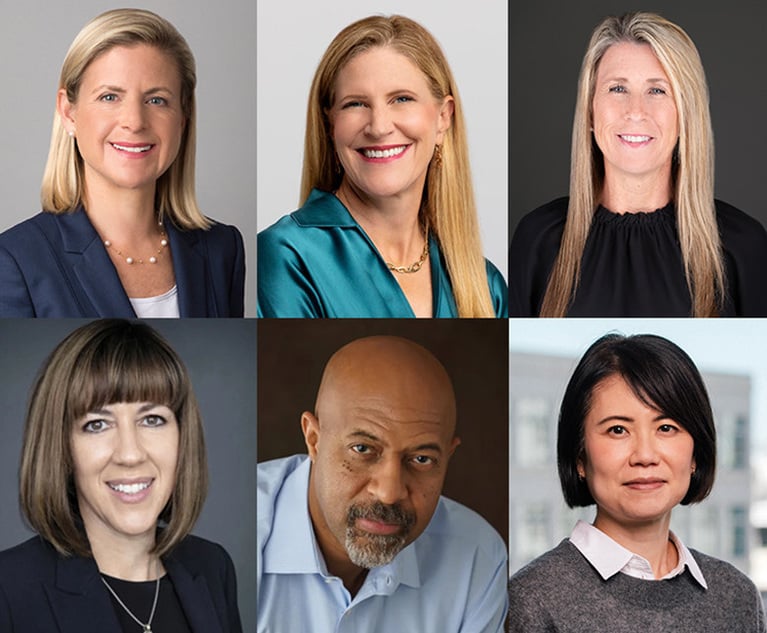Data Mapping May Be the Hardest Part of GDPR Compliance
One expert in GDPR said that the "most common" factor in compliance challenges was that companies didn't know what data they had and where it could be located.
August 15, 2018 at 02:44 PM
4 minute read
 Photo credit: Ivan Marc/Shutterstock.com
Photo credit: Ivan Marc/Shutterstock.com
K Royal is in the business of making sure companies are compliant with the European Union's General Data Protection Regulation. As senior director of privacy at compliance and security company TrustArc Inc., she helps organizations bridge the gap between knowing they must fully follow the GDPR, and actually crossing the finish line.
“I've worked with startups to global companies who are established in every country,” Royal explained. “The most common factor was that the companies did not know what data they have and where it is stored.”
The GDPR, which came into effect on May 25, adds so many new requirements for companies that deal with European Union citizens' personal data, that being able to locate it all is important. The law requires for instance, that companies report a breach to authorities within 72 hours and gives individuals the right to request data held on them and to have their data deleted.
Luis Diaz, the general counsel and chief cybersecurity officer of Vision-e, had spent 10 years working as the outside counsel for the company while he was a partner at Gibbons P.C. In September 2017, the software company faced the challenges of becoming compliant with the GDPR and appointed him as the top legal officer to help with that process and work on other cybersecurity issues.
Diaz said that when he started working at Vision-e, he and his team had to create the company's first data maps. The first step was make sure the company knew what kind of data it had and where it was stored. Which was, according to Diaz, quite the undertaking.
“It was a manual process for us working with IT. There are tools available but we choose to collaborate with IT to ensure we did not miss anything. It took thousands of man hours to complete,” Diaz said.
He said they needed to understand what kind of design they were implementing, what controls they had in place and to make sure they understood the nature of their data and where consumer data was coming from.
Diaz said Vision-e is working to continually improve their processes and will hopefully be able to employ artificial intelligence in the future to do the mapping.
While many companies may have not taken GDPR preparation seriously, Diaz said the executives at Vision-e understood the urgency behind compliance.
“In our particular case, because we are a 'processor' of data, it was clear that we had no choice but to be GDPR compliant,” Diaz said. “It was a business decision which was strategic to our future.”
Diaz thinks businesses will even tout their GDPR compliance in the near future. “Don't be surprised if in the next six months to a year you find people pointing to GDPR for a competitive advantage. It has raised and created an awareness for privacy issues,” he said.
Royal said that in her experience nearly all of the companies she has worked with were cooperative and willing to make changes to become GDPR compliant.
However data mapping has been an obstacle for her on one occasion. She said that with one company she worked with, which she declined to name, she was trying to help the organization map its data for GDPR compliance purposes. But she found the IT department would not let her begin the process and have the access to systems that she requested.
This content has been archived. It is available through our partners, LexisNexis® and Bloomberg Law.
To view this content, please continue to their sites.
Not a Lexis Subscriber?
Subscribe Now
Not a Bloomberg Law Subscriber?
Subscribe Now
NOT FOR REPRINT
© 2025 ALM Global, LLC, All Rights Reserved. Request academic re-use from www.copyright.com. All other uses, submit a request to [email protected]. For more information visit Asset & Logo Licensing.
You Might Like
View All
Fired by Trump, EEOC's First Blind GC Lands at Nonprofit Targeting Abuses of Power
3 minute read
Trump's Inspectors General Purge Could Make Policy Changes Easier, Observers Say

LSU General Counsel Quits Amid Fracas Over First Amendment Rights of Law Professor
7 minute read
Exits Leave American Airlines, SiriusXM, Spotify Searching for New Legal Chiefs
2 minute readTrending Stories
- 1Public Notices/Calendars
- 2Wednesday Newspaper
- 3Decision of the Day: Qui Tam Relators Do Not Plausibly Claim Firm Avoided Tax Obligations Through Visa Applications, Circuit Finds
- 4Judicial Ethics Opinion 24-116
- 5Big Law Firms Sheppard Mullin, Morgan Lewis and Baker Botts Add Partners in Houston
Who Got The Work
J. Brugh Lower of Gibbons has entered an appearance for industrial equipment supplier Devco Corporation in a pending trademark infringement lawsuit. The suit, accusing the defendant of selling knock-off Graco products, was filed Dec. 18 in New Jersey District Court by Rivkin Radler on behalf of Graco Inc. and Graco Minnesota. The case, assigned to U.S. District Judge Zahid N. Quraishi, is 3:24-cv-11294, Graco Inc. et al v. Devco Corporation.
Who Got The Work
Rebecca Maller-Stein and Kent A. Yalowitz of Arnold & Porter Kaye Scholer have entered their appearances for Hanaco Venture Capital and its executives, Lior Prosor and David Frankel, in a pending securities lawsuit. The action, filed on Dec. 24 in New York Southern District Court by Zell, Aron & Co. on behalf of Goldeneye Advisors, accuses the defendants of negligently and fraudulently managing the plaintiff's $1 million investment. The case, assigned to U.S. District Judge Vernon S. Broderick, is 1:24-cv-09918, Goldeneye Advisors, LLC v. Hanaco Venture Capital, Ltd. et al.
Who Got The Work
Attorneys from A&O Shearman has stepped in as defense counsel for Toronto-Dominion Bank and other defendants in a pending securities class action. The suit, filed Dec. 11 in New York Southern District Court by Bleichmar Fonti & Auld, accuses the defendants of concealing the bank's 'pervasive' deficiencies in regards to its compliance with the Bank Secrecy Act and the quality of its anti-money laundering controls. The case, assigned to U.S. District Judge Arun Subramanian, is 1:24-cv-09445, Gonzalez v. The Toronto-Dominion Bank et al.
Who Got The Work
Crown Castle International, a Pennsylvania company providing shared communications infrastructure, has turned to Luke D. Wolf of Gordon Rees Scully Mansukhani to fend off a pending breach-of-contract lawsuit. The court action, filed Nov. 25 in Michigan Eastern District Court by Hooper Hathaway PC on behalf of The Town Residences LLC, accuses Crown Castle of failing to transfer approximately $30,000 in utility payments from T-Mobile in breach of a roof-top lease and assignment agreement. The case, assigned to U.S. District Judge Susan K. Declercq, is 2:24-cv-13131, The Town Residences LLC v. T-Mobile US, Inc. et al.
Who Got The Work
Wilfred P. Coronato and Daniel M. Schwartz of McCarter & English have stepped in as defense counsel to Electrolux Home Products Inc. in a pending product liability lawsuit. The court action, filed Nov. 26 in New York Eastern District Court by Poulos Lopiccolo PC and Nagel Rice LLP on behalf of David Stern, alleges that the defendant's refrigerators’ drawers and shelving repeatedly break and fall apart within months after purchase. The case, assigned to U.S. District Judge Joan M. Azrack, is 2:24-cv-08204, Stern v. Electrolux Home Products, Inc.
Featured Firms
Law Offices of Gary Martin Hays & Associates, P.C.
(470) 294-1674
Law Offices of Mark E. Salomone
(857) 444-6468
Smith & Hassler
(713) 739-1250






